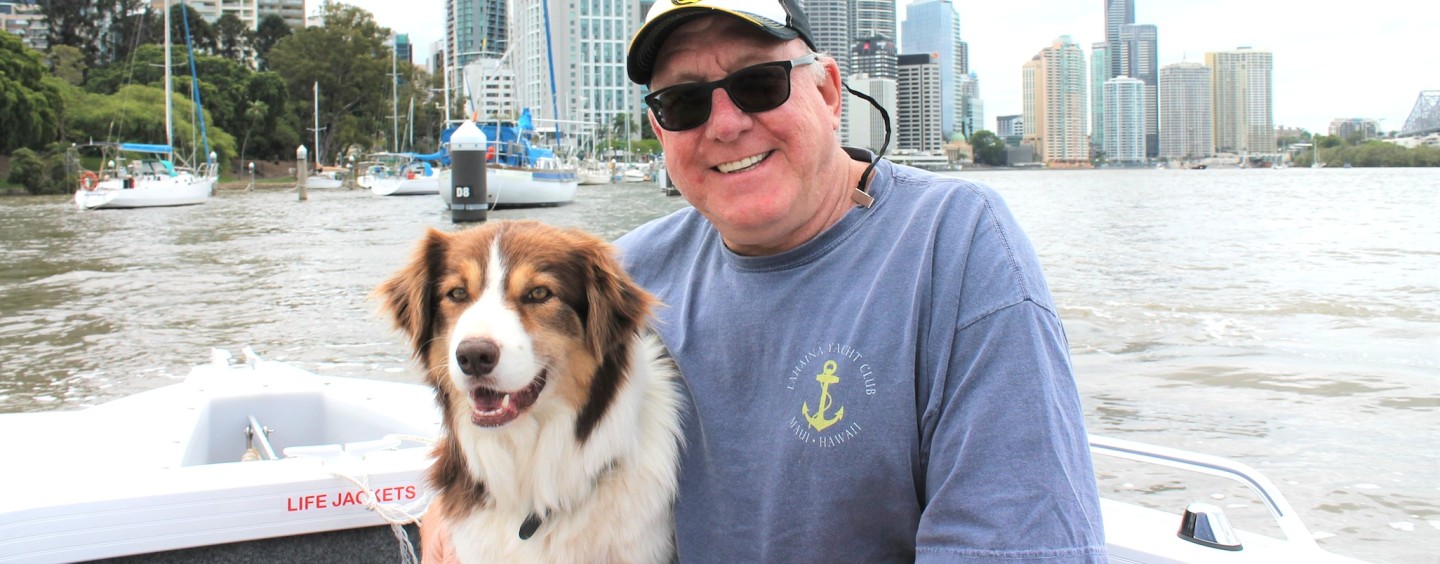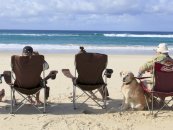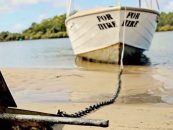Want to take your pooch boating with you? Here are some simple do’s and don’ts to make sure your outing is a happy and stress-free one.
As soon as Adam, my border collie, realises he is boating with us, he can hardly contain himself. He loves nothing better than spending time with us and taking in the sights and sounds as we motor along. We enjoy having him along too, because boating with a dog is now a pretty stress-free operation for us.
One of our favourite boating excursions is taking the Quintrex runabout up creeks or rivers with Adam on board, exploring as far as we can go. On windy days, “gunkholing”, as it is known, is a great alternative to bashing around in less protected waters, which is the only time we take him on the water with us, unless conditions are exceptionally mild. Bouncing along in rough conditions is just not fair on dogs, especially in our bumpy little vessels.
Adam is my third “on-water” dog, and I have learned a lot from his predecessors. I am also a professional dog trainer with C.L.E.A.R. Dog Training School Brisbane, which helps. I have come up with my top tips for those of you considering taking your dog out on the water.
The boat
Appraise your boat objectively. How dog-friendly is it?
Adam is allowed on the family 4.2m runabout, which has marine carpet and plenty of open space; but not on the trailer-sailer, which has a gelcoat surface and small cockpit divided by a mainsail traveller.
Your boat needs to have room for a safe go-to spot where your dog can lie down out of the way, preferably where you can rig some sort of shade.
The dog also needs secure footing. Decks covered in marine carpet are ideal, but slippery gelcoat is not. You can get doggy boots; however, some dogs do not like them, so it is best to get them used to the boots before venturing out on the boat.
There also needs to be an obvious and easy way the dog can jump on and off the boat. If not, be prepared to lift, or invest in the type of removable ramp sold at places like Supercheap Auto.
Planning
The key to a successful outing is detailed planning. Ensure your chosen route has plenty of dog-friendly stops where your canine companion can have a game or swim safely, and do their essential business.
All councils have designated areas where dogs are allowed. The Gold Coast City Council, for example, has three designated off-leash beach areas, and allows dogs on leash on most beaches. You can download the Gold Coast Dog Parks app with details at www.goldcoast.qld.gov.au.
Dogs are also allowed on leash in some national-park controlled areas. Visit www.npsr.qld.gov.au/parks and type in the name of the park you would like to visit.
Fines of more than $100 apply if you and your dog are caught somewhere they should not be.
It is also important to remember that not all marinas are dog friendly. If you are considering visiting one, make sure you call and check with the marina beforehand.
Weather
Avoid hot, sunny days if possible, and at all costs if you cannot provide shade aboard for them. Keep a close eye on your dog for excessive panting, and make sure he or she has access to cool water. You can keep them well hydrated by adding things like sweet coconut water to their normal water, which makes them drink more.
Swimming is an obvious way to cool them down, but only do this where you know it is safe. Bull sharks are present in some rivers, and the tide and current can also rip in and out at a furious rate.
For Adam, who also competes in dog sports, I have other accessories to keep him cool, including a “cool” coat you soak in water and then put on the dog, a “cool” gel mat for him to lie on, and a portable fan. There is a myriad of such things available at your local pet shop or online.
Basic commands
Life will be a lot less stressful if your dog has some basic obedience commands down pat. At the very least, this should include a reliable recall and sit-and-stay, so they will remain on the boat when required, and jump on and off the boat safely on command. I also teach my dogs to toilet on command.
You will encounter many other dogs on jetties and boat ramps. If your dog is not well socialised and friendly, be prepared to keep them on leash and muzzled when interactions are possible. Apart from the experiencing trauma from an unpleasant encounter, you may be further fined for an incident. Earlier this year, a Brisbane man was ordered to pay more than $1500 for failing to prevent his dog attacking another man and dog on a beach.
Essential equipment
A lead, a water bowl, a container of water, and doggy poo bags are essential equipment. I also take a soft foam mat when the weather is cool, or a gel cool mat when it is hot for Adam to lie on. This lessens some of the jarring vibration, and also doubles as the dog’s safe go-to spot. You can attach a lead to the boat to keep the dog on the mat, if necessary, or even put the mat in a portable crate.
Many owners take the added precaution of putting a life jacket on their dog.
If you are going out on a sunny day, or your dog has a pink nose susceptible to sunburn, invest in some doggy sunscreen.
It goes almost without saying that your pet should be microchipped. Adam also has a tag on his collar with my phone number.
Keep it fun
Finally, remember that this is meant to be fun, both for you and the dog.
My first boating dog, Max, used to have a fixed stare he would give the helmsperson if it got too rough for his liking. Just as old Max used to, your own dog will soon let you know what it likes and dislikes.
The key is starting with short trips on flat water on cool days, and building from there, ensuring every outing is a happy one.
By Caroline Strainig



























